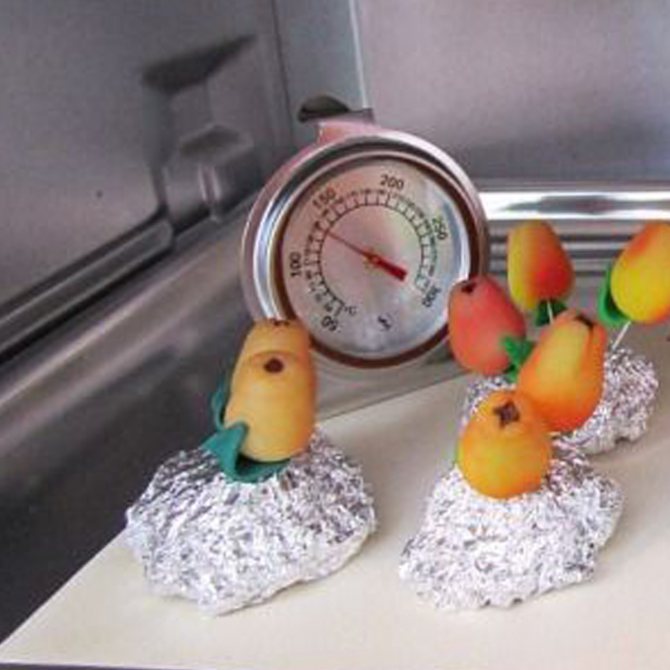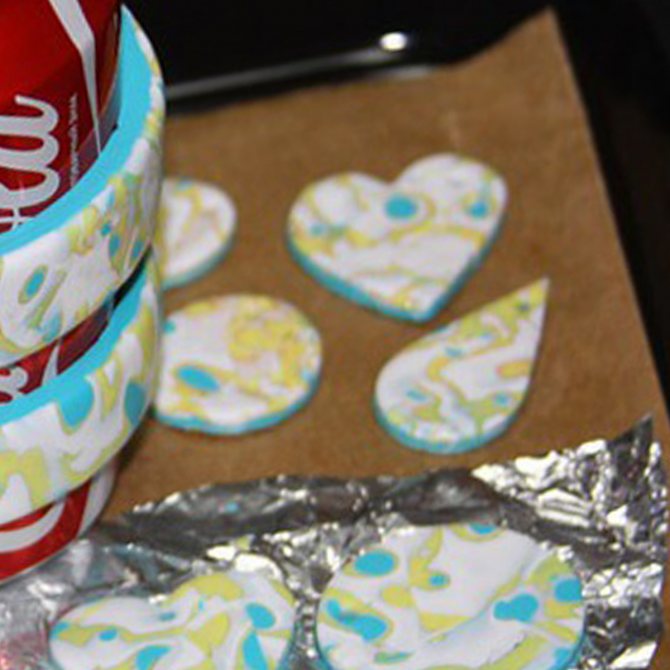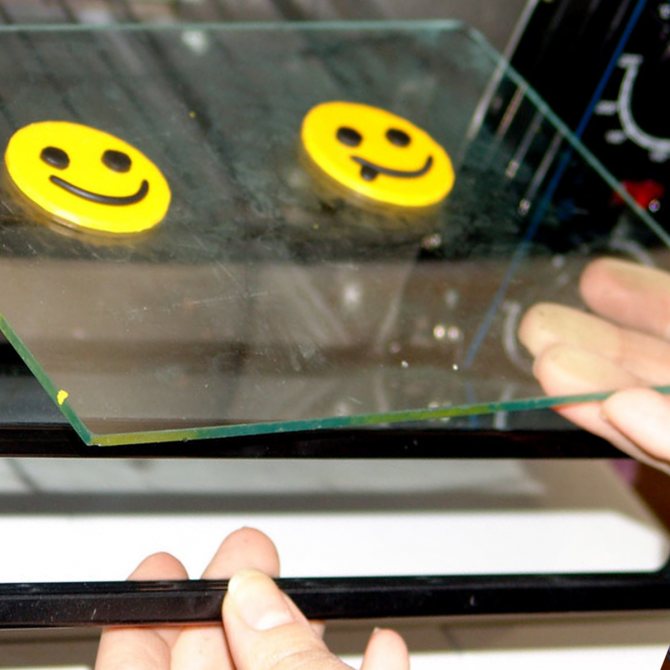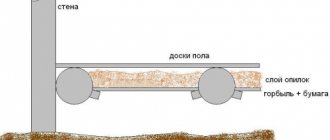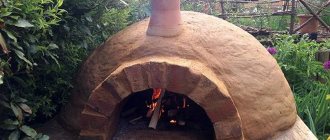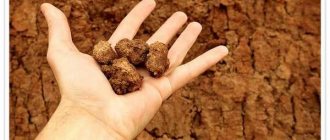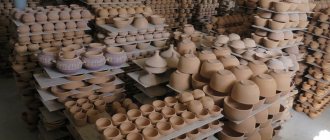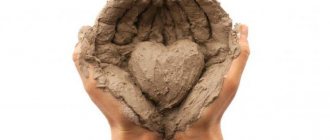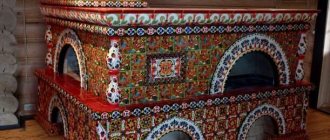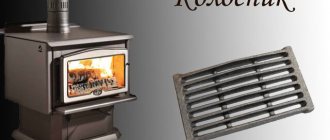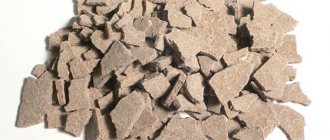Clay history
The first ceramic round-bottomed vessel, which was made of baked clay, was made by man about 10 thousand years ago - the Mesolithic era reigned on Earth. Nevertheless, a more general idea about the theory of a person's acquaintance with this material, which tells that a piece of clay was accidentally dropped by a person into the fire, and when it was taken out of there, it turned into a solid mass, does not fully correspond to reality. Scientists of our world have slightly corrected this legend with their research. At one time, a special analysis was made of the remains of clay shards from the excavation, which belonged to the Neolithic era, a group of specialists established the following fact - our distant ancestors actively used bird droppings, bird fluff, egg shells and pieces of shells of mollusks as a raw material for the production of dishes ... These components were always abundant where migratory birds usually nested and mollusks gathered along the coast. Such a set of materials had a high degree of stickiness, and the clay acted as a connecting link - it occupied no more than 30% in percentage.
Several millennia have passed, after which a person realized that with the help of clay it is possible to bond non-plastic materials, such as grit - crushed stone, and chamotte - crushed fragments of burnt dishes, as well as sand. These materials are of mineral origin. At that moment, it dawned on a person that clay is the most durable material that can be used to make dishes. From that moment on, they began to use clay of the same grade for the production of products, or the grade of clay was mixed with each other. This is how burnt earthenware was created.
This experience, which a person received in dealing with clay, served as a good impetus for the development of pottery. People already had an idea of what clay is and what effect a variety of organic and inorganic additives have on it.
After a while, people mastered the method of cleaning pottery clay from various impurities - elutriation. In ancient Greece, this material was mined near the city of Athens - they were open-pit mines. The extracted clay went through a process of processing - drying, grinding with the help of special two drums, rotating by the power of slaves and horses. After that, the resulting mass was poured with water and soaked for some time in certain boxes, made up of a stepped staircase. When the time came, these boxes with a mass of clay were washed under the pressure of clean water, which boiled and flowed gradually from one box to another, according to the principle of steps. Clay for pottery was divided into different types of fractions, each of which was used for something. The purest clay was found in the lowest box. The water went down, and the sediment had to mature and thicken. And today, elutriation is the most convenient and profitable way of cleaning pottery clay.
"Keramos", translated from ancient Greek means "clay", data on this concept are available in the testimonies of Homer, in his work "Iliad", which dates back to the VIII century BC. Some scholars argue that the root of this word is the Indo-European language, which was used by the inhabitants of Europe - from the borders of the Urals to the territory of the Apennine Peninsula back in the III millennium BC. Perhaps these judgments are erroneous, because if we compare the roots of some words "zd", "keramos" and "brnie", we will see that the concept "zdun" in translation from Old Slavic means "potter", the root "zd" is present in such words like "building", "creator", "create". The term "brnie" is "clay mixed with water." It is possible that even the name of the city of Brno in the Czech Republic was given based on these considerations.In fact, the word "clay" has a much longer and more ancient history, for example, it could have arisen from the word "clay", which means "aluminum oxide or alumina", which is a constituent part of clay.
TURNING CLAY TO STONE: SECRETS OF GERMAN AND RUSSIAN POTTERS
In 1924, the first employees of the Tomsk Regional Museum went to Gornaya Shoria. From the ethnographic expedition they brought digging sticks and other items of ancient unsettled life. Among them, a bottle of stone mass, fresh for that time, was randomly crept in. At the turn of the 19th and 20th centuries, these were very popular as containers - they sold mineral water, vinegar, herbal balms. Shock-resistant, moisture-proof and opaque, in general - flint! The Shor bottle became the first in the museum's collection of stone goods.
The History of One Thing is a joint project with the Tomsk Museum of Local Lore.
“The name“ stone product ”does not mean at all that this object is carved from stone,” explains Elena Malofienko, a museum employee. - This means that the thing is made of clay of a special recipe and strong firing. Such firing made it possible to obtain a very dense ceramic mass - so strong that when a steel blade hit the mug, sparks could be struck! "
The pride of the museum collection is two beer mugs from Germany in the middle of the 19th century. Both are decorated with relief ornamentation and glaze with restrained color. Many paints were not suitable for strong firing, so the amount of glaze in the production of steinguts ("stone goods") was limited. Often, table salt was used for glazing - it was thrown into the forge at the end of the firing, and the soda contained in it combined with silicates, covering the surface with a thin layer of glaze. But stone goods could be cut, polished, engraved. Most often, vegetation, coats of arms, mascarons (images of human and animal heads) and national proverbs and sayings were carved on the circles.
“Tin lids are attached to the handles of our mugs,” Elena Malofienko shows. “What are they for? The tradition goes back to the Middle Ages. At that time epidemics swept across Europe, and the fight against flies as carriers of the infection was a priority. Beer is an extractive drink, rather fragrant; hordes of flies were always swarming around it. Therefore, the magistrates of German cities were obliged to supply each mug with a lid. Over time, the flies were dealt with, but the tradition of closing mugs remained.
1/10 or 1/12 of the lead was added to the tin from which the caps were made - a low-melting material was obtained, rather plastic, on which it was possible to work out the smallest relief elements. The play of light and shadow on the freshly cast tin lid had an excellent decorative effect. Such dishes were highly prized ”.
Stone goods, according to Elena Malofienko, have been known for a long time. Even in Ancient Egypt, they did something similar. And the tradition of making just such ceramics came to Germany in the 16th century from the Mediterranean. In Germany, unlike Italy, there were many forests at that time. Therefore, the Germans could afford production that required a large amount of wood.
“Germany has become the largest producer and exporter of beer mugs to European countries,” says Elena Malofienko. - Imported German stone products and England, where at that time pottery was poorly developed.
In one historical essay, it was reported that in England during the time of Queen Elizabeth, even court gentlemen drank from leather cups. This gave the mocking French a reason to assert that the British, allegedly, drink from their own boots. "
Museum stone circles are fraught with several mysteries. So, on the lid of one of them there are three hallmarks. On two of them, the eagle is the heraldic symbol of Germany. And on the third, probably, the city's coat of arms - two towers, and between them a man with a sword.Elena Malofienko has never seen such a coat of arms anywhere - and he could tell a lot about the place where the mugs and pewter dishes were produced, and about the production itself. It is known that German potters developed the recipe for stone mass in the course of experiments, mixing natural components (clay, feldspar, quartz) in different proportions.
Tomsk potter Andrey Saltan was also interested in German technologies of stone mass. He sometimes needs special materials for products with certain properties. For example, a coffee turk, if made from local clay, will be non-functional - it will not withstand heating on gas. Here the cordierite mass discharged from Spain is best suited, which is able to withstand such a thermal shock. However, ordinary clay from the Tomsk quarries can be hardened so that it will be like stone. Well, or almost like a stone one.
“If we drop this jar from my height onto the floor,” Andrei Saltan throws a delicious chocolate-colored ceramic vessel on the floor, “nothing will happen to it! You see? The shockproofness of this tableware allows you to drop it perfectly on a wooden or earth floor ... "
Milking and waxing technologies, invented by Slavic potters back in the Middle Ages, and now, according to Andrey Saltan, are among the best for making waterproof and strong ceramics. For those who are interested in how this is done - step by step instructions:
1. Cooking clay
“The very first thing,” says Andrei Saltan, “we must cleanse the clay of all that large that is found in it - stones, roots, mammoth bones ... Then we dilute the rest of the mass in water to a liquid state. Light particles float, heavy ones settle. What remains in suspension must be passed through a sieve. We get finely dispersed high-quality mud, from which it will already be possible to do something over time. Then it needs to be defended and dehydrated - to drain the water that will be released during the settling process. Then the clay must be dried - for example, in the sun. At this stage, it is advisable to knead and mix it so that it dries out evenly. When the consistency resembles dough, the clay is ready to work.
An interesting fact - when clay was cooked in large quantities, it was placed in large pits and tightly closed from the sun and wind - in order to achieve ideal humidity. She dried there very slowly. For example, the Gzhel enterprise in Soviet times prepared its clay for 25 years. And the Chinese brothers, who made their thin porcelain, prepared clay ... for their grandchildren! "
2. We work on a potter's wheel
“We wet a piece of clay,” Andrei Saltan starts the circle, “we give it a clear body of rotation. We get something like a cone, and at this moment we learn a lot about clay. We look at how homogeneous it is, whether there are any foreign inclusions, and we do one more important thing - we structure it. Clay is made up of small, thin plates; when we run our hands back and forth on it, the plates that are in contact with our hands, they are positioned in a certain way. That is, the entire mass acquires a structure more or less prepared for life in a circle. And here we get: a washer, a jar, a jar.
Krynki are female, male and bachelor. Bachelors, for example, had a wider neck so that the owner could penetrate there with his wide hand and wash the vessel after use on his own. The decor may not be applied, but it is desirable to process the edges of the can. To prevent scratching your lips, you can grind the neck with a piece of rawhide leather, or, at worst, with a plastic bag. "
3. Dry and bake
“After drying, our product will change,” Andrei Saltan continues, “it will brighten a little and decrease in volume.At this stage, the clay behaves like a cookie - if we pour water into the vessel, it will turn sour and fall apart. Therefore, we put it in an oven heated to 1000 degrees. And what we get from there is brick by brick, only of the original form.
And, like any brick, it can do the same - absorb and let moisture through. Therefore, if we pour water into such a jar, then after a while we will find a puddle on the table. What to do? The first method was ingeniously simple - the vessel was lubricated with fat from the inside, the film did not allow water to come out. But drinking water with fat was not very pleasant. Therefore, 800 years ago they came up with another interesting way. "
4. Thickening
“The word“ milk ”comes from the word“ milk, ”explains Andrei Saltan. - That is, we put the already burnt hard work in a bowl of milk. And we let the wall of the vessel be saturated with milk protein - first of all, we need protein. They let it dry up, bathed it again. After the third milk bath, we put the vessel in an oven heated to 350 degrees.
From it he will come out of a completely different quality - with burnt milk on the surface. Casein protein closed the pores on the outside of the vessel, but inside it was still a "brick". So some moisture permeability still remained. Therefore, further processing was required. "
5. Waxing
“The milk vessel was cleaned, an elegant contrasting surface was obtained,” says Andrei Saltan, “then it was again bathed in milk and put back in the oven heated to 200 degrees. When the product in the stove was already well warmed up, beeswax was placed there. He was allowed to melt and boil a little so that the light fraction evaporated, and then a certain amount of resin, the resin of coniferous plants, was added. This hot cocktail was used to process the heated ceramic product.
The wall was soaked to a depth of one and a half millimeters in total, but it never let moisture through. Plus, the vessel could already withstand temperatures up to 420 degrees - you can safely put it in the oven. And then they drew attention to one more thing - the moisture-proof wall perfectly let the air through: if you put the picked berries there, they will stay fresh much longer than in glass or plastic dishes! "
Tags: Tomsk, Tomsk region, Tomsk Museum of Local Lore, ceramics, clay, stone goods, Germany, potter, Andrey Saltan
What is Clay?
Clay is a dispersed sedimentary rock, which consists of some plastic mineral particles, the chemical composition of which is hydroaluminosilicates, as well as accompanying impurities of other minerals. The concept of "hydro" is quite well-known, "alumo" is understandable, but silicate is a compound of oxygen and silicon.
The property of plastic minerals, combined with water, is to make the clay more plastic, so that it is possible to form a certain shape from it and maintain it when it dries. Quartz (sand), carbonates (marble and chalk, dolomite and limestone, magnesite), as well as feldspar (for example, granite) are non-plastic, moreover, their inclusion in the clay is capable of “thinning out” the material, therefore, can reduce plasticity.
The concept of plasticity from the antique means "fit for sculpting", which directly indicates the ability of the material to change its shape if you apply force, as well as the ability to maintain the acquired shape. Pottery clay and its plasticity can be characterized by several criteria. For example, how plastic clay is can be judged by the efforts that must be made to make a clay product deform. You can also determine the plasticity by the amount of water used, which is mixed with dry clay, and after the addition of which the clay is capable of deforming and retaining a certain shape.
A professional potter will be able to determine the level of plasticity of clay for a potter's wheel by such a sign - the clay will wrinkle with some effort in his hands, but will not stick to them. This is the easiest and most affordable way to determine the plasticity of clay.
Pottery clay can be white, gray, black, blue, green, brown, red and yellow. Often, the color of clay directly depends on the influence of organic substances, some tend to burn out during firing. For example, Filimonov's black clay can be made white by burning it.
Pottery making process
Pottery clay
The process of creating pottery begins with visiting the places where the pottery clay is found and delivering it to the workshop. In the workshop, the clay is poured with water, crushed by hand, and the desired moisture and plasticity are determined. The main requirements for pottery clay are that it must be clean, even without grains of sand.
The traditional way of preparing clay for work is soaking. When soaking, the clay is not only cleaned, but also becomes more greasy and plastic. This is how clay is processed, which contains a lot of sand or has low plasticity. Pour it with water for 10-15 hours, then remove the water, and leave the clay to evaporate excess moisture from it. After the clay reaches the desired density, the consistency of a thick dough, and ceases to stick to the hands, it is tightly closed and allowed to "ripen", or to mature.
Before twisting (working on a potter's wheel), the matured mass should be crushed to remove air bubbles from it.
Potter's wheel
To make the item, you need a potter's wheel. In the beginning, the pottery wheels were hand-made, but the foot pottery wheel appeared much later. There are also pottery wheels with an electric drive. However, there are folk craftsmen who still use a hand-made potter's wheel.
The foot potter's wheel, used everywhere by modern potters of the Kuban, is not much different from the ancient samples. The potter's foot wheel consists of a frame, a vertical metal axis (shaft), on the top of which a small disk is fixed, on which the potter forms a vessel, and in the bottom there is a foot wheel in the form of a large massive wooden circle. The potter sits on a bench and rotates the flywheel with his right foot, counterclockwise, smoothly increasing or decreasing the rotation speed. There are masters who spin the circle with both feet.
A potter's wheel, the principle of which was used by the famous English ceramist Wedgwood in the 18th century.
At different stages of forming a vessel on a potter's wheel, various tools are used: a string or wire; at the final stage, cycles, scrapers, and rules are used for smoothing.
Manufacturing the product
To make a product, you first need to separate a part of the required dimensions from the prepared clay and give it a spherical shape. Then the rotating circular shape is formed into a cone (dome), from which a cylinder is formed, which is hollow inside. If you start to get good cylinders with uniform walls, then pulling a pot shape out of them is not very difficult. Clay should be handled with wet hands, the master periodically moistens them with water. Any shape of the product can be made from the cylinder. Then excess clay is removed from the upper disc and the water inside is removed with a cloth. After that, the resulting product is cut from the circle with a string and carefully, trying not to squeeze the walls, is transferred to a rack for drying.
Drying and Burning
The formed product is usually subjected to pre-firing drying, firing, and then decoration. Sometimes the product is also decorated in a raw form. Various methods are used to decorate the form: indentation, drawing with a hardwood stick, and others.The patterns are mainly applied directly when the potter's wheel is rotated, immediately after molding, or after the product has slightly dried. A special type of embossing is represented by the so-called "fingertips". This embossing is used to decorate the edges of the vessel. These techniques, developed in ancient times, continue to be applied by modern potters. Glazing is also used in decoration.
When firing a product in a potter's forge, a temperature of more than nine hundred degrees is reached. There are many designs of furnaces, but perhaps the most common is a simple two-chamber furnace. Basically, this type of forge was used by potters in the Kuban. Its chambers are separated by a grate; at the top are products, and at the bottom - fuel. Most often, the forge is burst into the slope of a ravine or hill - the thickness of the earth serves as a reliable heat insulator. The body of the forge is laid out of bricks or molded from clay. The forge is loaded through a hatch on top. First, large dishes are placed on the grate, then medium-sized, small products are placed on the very top. The hatch is closed with iron. The temperature should be raised gradually and evenly. For firing toys 3-4 hours are enough, and for firing dishes - 10-12 hours or more. The oven should be cooled slowly. During this time, you must not open the entrance to the oven and examine the products. Unloading products should be carried out at a temperature of 50-100 degrees (the lower the temperature, the better).
Sources:
- vse-svoe.com
Where does clay come from?
The emergence of clay on planet Earth is attributed to the interglacial period, during which there was a gradual melting of the ice cover, the thickness of which in some European parts reached two kilometers. The melting process caused the most powerful water streams, which played the role of clay. There was peremucheniya, re-delaying of rocks, which in the process of movement were mixed into a single mass. On the territory of Eurasia, as well as in some regions of Russia, as a result of these processes, many deposits of clay appeared, which had different properties. You will not find this on another continent.
If we turn to the physics and chemistry of the appearance of clay, we see that clay, as such, is a product of complex processes of decomposition of certain rocks. But these processes took place on Earth not only thanks to glaciers. The inaccessible peaks of the mountains contain rocks such as granite and porphyry, in the lower parts of the mountains there is shale - these rocks have been exposed to wind and abrupt changes in atmospheric influences. Winds in winter and severe frost, thick fog and terrible continuous rain, replaced by the scorching sun - these natural elements gradually destroyed the structure of whole stone rocks. Rain streams wash away fine dust that was formed by the decomposition process, and a powerful stream of rainwater, which formed from rains and a melting glacier, delivered this dirty stream to large rivers. When this mass reached a calm place in the river, it gradually settled and thus clay was formed. These processes take place, in fact, in every, even the smallest, river. You can see this for yourself when you try the river bottom.
Sources of raw materials
If you do not have the opportunity to buy pottery clay at a specialized enterprise, or in a quarry where a deposit of this material has been discovered, then you can find it everywhere - clay can be found anywhere, only it will be much more difficult to work with such material. Roadsides, shores of swampy areas or the shore of a small reservoir, clay formed as a result of rain or spring water entering a natural clay bowl and not being able to pass into the soil - these are the sources of raw materials.
The territory where it was possible to extract clay for the potter's wheel was formerly called by the people simply - clay, clay, clay dig. Clay meant a hole 71.12 cm deep, which was located somewhere in a forest area. Clay, often, potters removed either a whole layer, or removed it in large pieces of 16 kg in weight. Everything that was dug up was put on a cart and taken to the workshop. But extracting clay is not an easy, even dangerous process - there are frequent cases in history when, when excavating clay layers, the earth collapsed and the potter died. Clay was mined as needed. Necessarily, before the onset of the rainy autumn season, a supply of clay was made. Usually, pottery workshops stocked up annually with clay in an amount of up to 200 poods. For clay in the yard of each master was assigned a certain place - a shallow hole in the courtyard, or lumps of clay were laid in the entryway of the house. It also happened that clay lay in the potter's yard for several years in a row. Thus, pottery clay underwent one more processing - a frost test. Since there were long rains before winter, the layers of clay were saturated with water, then frosts came and loosened it, which contributed to the improvement of plasticity. It turns out that the more clay lies, the better its qualities become. When the clay is saturated with moisture, it slowly begins to rot. Salts, which are present in a certain amount, enter into a chemical reaction, as a result of which a gaseous environment is formed. If it is not given a way out, this quality can harm the finished clay product when fired in a kiln. According to the folk place where lay pottery, was called "purgatory". However, the air around this place was always filled with hydrogen sulphide, which is released from the clay when rotting, and this smell was difficult to stand.
Furnace types
Furnaces have a variety depending on the fuel used:
- Wood burning.
- Gas.
- Electrical.
The first version of the stoves is more often used in home workshops and is installed mainly outdoors if the workshop is small. Gas ovens can operate on both propane and natural gas. Basically, potters use electric kilns, which have many advantages: they heat up quickly, they can be installed even in small workshops and it is quite simple to make an electric kiln for firing ceramics with your own hands.
Electric ovens are also divided into two types:
- Muffle furnaces are furnaces in which a heating element is placed around a one-piece container made of refractory material (muffle).
- Chamber furnaces are ovens in which the heating element is located inside.
Any kind of kiln for firing clay can be made by hand and its cost will cost several times lower than buying a ready-made one.
Types and properties of pottery clay
Long before the period when clay began to be used in wide industry, as well as before its properties began to be studied, the properties of pottery clay could only be determined by touch. And today, many masters use just this way to determine its properties. Indeed, this is the only way to more accurately evaluate the properties of clay, which comes to life in the hands of a potter.
So, the clay that is used in the pottery workshop must have increased fat content, special weight, pliability, elasticity, and must also have a solid character, because it has to withstand the shape set by the master.
Pottery clay can be red or brown, blue or green, gray or white. Occasionally you can find clay, the color of chocolate, after the folk "snickers", or dirty black clay. These colors are due to the presence of a large amount of organic impurities. Generally, the level of organic matter in clay, including fine carbonaceous particles, can be very high.Thus, this is sufficient to support the industrial roasting and combustion process without the addition of any fuel. For example, in this group of clays we can include the Moscow Region intercoal refractory clay.
The firing process for pottery clay is the same oxidation process after which it can become either white, red or yellow. What color you get clay after firing depends only on the presence of a certain amount of titanium and iron oxides. If iron oxides in combination with titanium additives in total do not exceed the level of 1%, the clay will have a white color even if fired. But if the total indicator of these components is more than 1%, after the end of the firing, the clay product will turn reddish, even if it had a green or blue color in a semi-finished form. The white color is given to the clay product by aluminum oxide - it is present in the clay in a percentage ratio of up to 60%. Refractory clay is yellow in color. It is not used very often in pottery, since it requires a very high temperature to burn it. You can use this knowledge when preparing colored clay samples - add inorganic pigment to white clay and you get a different color. It is impractical to add the same pigments that have organic substances to pottery clay - they will simply burn out during the firing process, the clay will be the same color as before firing.
Blue or green clay is suitable for the production of pottery without prior preparation. It could be found along the riverbeds.
Craftsmen usually advise against messing with potter's wheel clay that is chocolate or dirty black in color. The reason is simple - when you burn the product, the organic matter that is part of the clay will exude an unbearable smell.
Master's advice
In pottery, fresh and sour clay was also used. Fresh clay was preliminarily poured with water and crushed, and sour clay was laid in the mixture from autumn to spring, only after that was used. In use there was also felted clay, cloth, white and skinny, as well as brilliant green.
How to choose clay?
This is a text for ceramists who live in the urban jungle and cannot go and dig clay from the nearest river. Here we will talk about the clay presented in ceramic stores. The clay in the store has one big and very significant plus - it is ready to work (if it is not sold dry), this, of course, saves a lot of time. Preparing clay for work - sifting, adding impurities, drying, mixing and aging - this is a separate essential work that requires a lot of time and effort and is often only possible for men. Today you can order clay for modeling, for working with a potter's wheel, casting, and it will be brought directly to your home, and this, you see, is convenient. So which clay to choose for work among all this variety? Today, hundreds of different types of clays are available to ceramists. Each type has its own advantages and benefits, so the choice is often difficult. Clay in ceramic shops, as a rule, is sold in three types: dry, plastic and liquid. Dry clay is convenient for transportation, it is already sifted and cleaned, the master only has to add the required amount of water and stir or rinse the resulting composition for casting or modeling. The advantage of dry clay is that the ceramist himself can create the mass he needs in consistency and immediately add all the necessary impurities. In addition, dry clay is cheaper than ready-made mass, and many professionals like to combine several types of clay and create their own author's mass that suits specific requirements. Clay in liquid form is intended for casting, it is also called slip. It is also sold differently depending on the composition: porcelain, earthenware and others.We will dwell in more detail on plastic clays for modeling by hand and working with a potter's wheel. Such clay is sold in stores either in small pieces by weight, or in large rolls of 10-30 kg, with which it is much more profitable to buy clay. When choosing the right clay for your work, you need to consider many factors, the first of which is how you interact with the clay and what kind of product you want to end up with: decorative, functional or sculptural. Are there any peculiarities in your work that can only be performed when working with a certain mass? If you plan to work with clay on a potter's wheel or sculpt with your hands, then you need pottery clay. Manufacturers, as a rule, indicate whether a particular mass is suitable or not suitable for working behind a potter's wheel, because not all plastic masses, alas, are good friends with it. Secondly, you need to decide on the color of the mass. Here you just have to reconcile this issue with your artistic goals and future work with color. Clays are light-burning (from white to beige and yellow), red-burning and dark brown / black. The color of the clay depends on the composition of the clay. Iron and titanium oxides make the clay red, and manganese oxide makes the clay black. Moreover, the color of the clay before firing often has nothing to do with the color of the fired shard. For example, the well-known blue clay after firing acquires a classic brown-red hue. When choosing the color of the clay, it is imperative to look at the probes at the temperature at which you plan to burn the mass, because the color of the clay differs at different firing temperatures. To choose the right clay color, you need to understand how you will decorate the product. If you plan to use non-deaf glazes, then you need to choose a light-burning mass to make the colors brighter. Matt dull glazes do not care what kind of clay is under them, if you want to do milk firing, then black clay is not your choice, because it will not be visible on it. Try to plan your decoration ahead of time to select the desired mass. Thirdly, when choosing a material, you need to decide on the firing temperature of your clay. There are masses of a wide range of firing that can be fired from 900 degrees to 1300 degrees, and some masses do not withstand more than 1000 degrees and melt. Therefore, you need to choose a mass that your oven can burn and that will suit your glazes. Attention, always when working with new masses, you need to put probes of your glazes, and not immediately paint the whole product for joy, because not all glazes are friends with all clays, you need to check whether your glaze gives a new mass of coke or bubbles, whether it lays down well ... Also today in ceramic stores there are special clays that are used for special tasks. For example, fireclay masses. Chamotte is a small crumb from a burnt shard, which is added to clay. Chamotte chips give the clay heat resistance, it holds its shape better and makes the mass more porous and more suitable for sculpting large shapes. Chamotte comes in different fractions and is sold separately, i.e. you can mix it into the mass you need yourself. You can potter with clay with small chamotte, it's even pleasant, but pottery with large chamotte is fun for extreme lovers. Chamotte clay with coarse crumbs, as a rule, is used to sculpt large works, because chamotte "leads" less, and it is also suitable for creating street ceramics, since chamotte clay products are more durable and more easily tolerate temperature changes. Porcelain, semi-porcelain masses and earthenware are white high-temperature masses that are more suitable for casting, hand sculpting, shaping, but some masters dare to potter with them, despite the fact that it is very difficult.But from these masses it is possible to make such products that cannot be made from other, coarser clays - thin-walled, light, elegant. Working with these masses is considered aerobatics and already experienced masters use them. But the variety of clays is not limited to this: the masses can be painted in different colors with the help of pigments, then the clay will not lose the color you need even after firing, with the help of colored clays you can create products using the nerikomi and neriyagi technique.
Before you find “the one”, it is possible for you to try many clays of different manufacturers and types. Most often, the master uses several types of clays, designed for different tasks. And many advanced craftsmen create clay for themselves or improve ready-made masses.
Happy firing!
From 2450 to 3650 rubles.
The Russian North ... The land of the endless sky, fluffy snows, white nights and long winter evenings ... The land of rich forests, pristine lakes and rivers ... The land of strong-minded people who know how to live in harmony with nature ... The land of masters who have brought their art to us from time immemorial ... Wood and bone carving, birch bark utensils, Severodvinsk painting, embroidery - these and many other crafts are carefully preserved by generations of craftsmen in the Russian North. We would like to offer you to purchase goods made by craftsmen in accordance with folk traditions. In our online store of folk crafts, carved wood products, chipped birds of happiness, birch bark products, painted wooden boxes, embroidered linen tablecloths and aprons, linen gift bags, pottery and earthenware, traditional Kargopol clay toys are always on sale. A wide assortment of pottery and earthenware is presented in the Shining of the North online store. You can buy pottery by choosing from a large assortment of pottery an earthenware jug, a pot for onions and garlic, earthenware for storing bulk products, a baking pot in the oven, an earthenware jar for milk or kvass, a set of earthen cups, a unique earthenware teapot, a large mug for beer or kvass, an earthen sugar bowl or honey cake, an earthen tureen or pancake maker for Shrovetide. All products are made by hand or with the predominant use of manual labor. It is no secret that in the old days, handicrafts were mostly of a utilitarian nature. Today it is customary to consider such products as souvenirs, but these items have not lost their usefulness in everyday life. We invite you to look at the goods in our online store not only as souvenirs, but also as things necessary for the household. Clay dishes are in great demand these days. Until now, clay dishes have no analogues. The food baked in clay pots has a delicate aroma, exquisite and juicy taste. In earthenware you can cook whatever you want: porridge, mushrooms, meat, julienne and other dishes. Especially for this, we talk about the possibilities of using the product you like. By purchasing goods in our online store, you contribute to the development of Russian culture and make an excellent gift for yourself or your loved ones. No mass-produced product can compare with a hand-made thing, a thing in which a piece of the master's soul is embedded, a thing that keeps the warmth of human hands.

